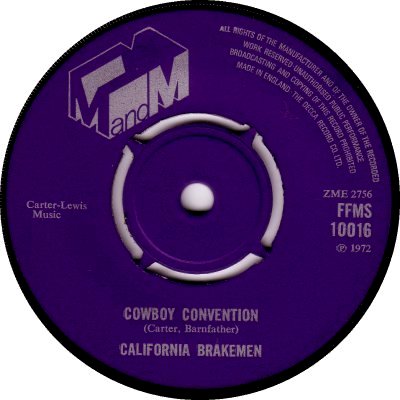
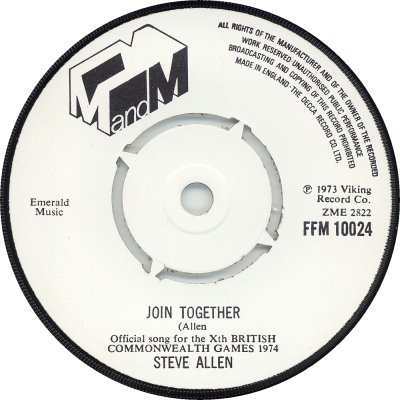
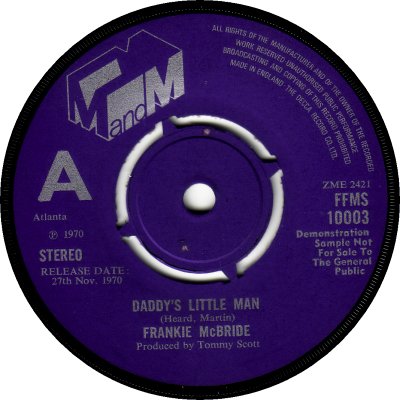
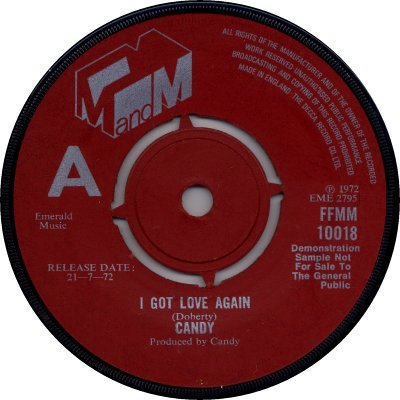
A branch of Mervyn Solomon's Belfast-based Emerald Records (q.v.). Emerald had dealt dealt largely in Irish / Country & Irish records, but was looking to widen its interests; to that end it introduced M and M in November 1970. According to 'Record Retailer' of the 7th of November the new label was intended for Pop and for Country with 'international potential', and was named after Mervyn and his father Maurice, who was one of the men behind the Belfast record distributors Solomon & Peres. 'Music Week' (the renamed 'Record Retailer') of the 7th of October 1972 described M and M as Solomon & Peres's label; an article in 'MW' of the 6th of October 1973 said that the label was for 'product issued under license', which suggests that its purpose had shifted by that time. Be that as it may, M and M seems not to have survived long into 1974.
As a stablemate to Emerald, which enjoyed a long and close relationship with Decca, M and M came under Decca's wing; its records were pressed and distributed by that company. It kept the same label design throughout its life (1), though for some reason copies of Steve Allen's 'Join Together' b/w 'Sylas Peabody' (FFM-10024; 1/74) can be found with black-on-white labels (2) as well as the usual silver-on-blue ones. Until the middle of 1972 demo labels were similar to issue ones, with the appropriate additional text (3); at that point they turned red, in common with most of the other Decca family demos (4). Unlike those of Emerald, M and M's singles weren't given a company sleeve - they were sent out in white sleeves with wavy tops. Stereo singles were numbered in the FFMS-10000s; mono ones had FFM or FFMM prefixes. The singles by Gumm are collectable, the first more than the second, while Steve Allen's version of the David Bowie song 'Life On Mars' b/w 'Baby I'm A Want You' (FFMS-10021; 11/72) is also worth picking up. Pacific Sound's Prog Rock 'Tribute To Jimi' b/w 'Thick Fog' (FFMS-10012; 11/71) sounds out of place alongside all the Pop, Country and MOR sides but it appears to be the pick of the bunch in terms of value. Six of the final seven singles were licensed from Viking Records of New Zealand. In 1975 Emerald intoduced the Mint label (q.v.), which seems to have taken over M and M's role as the outlet for licensed product.
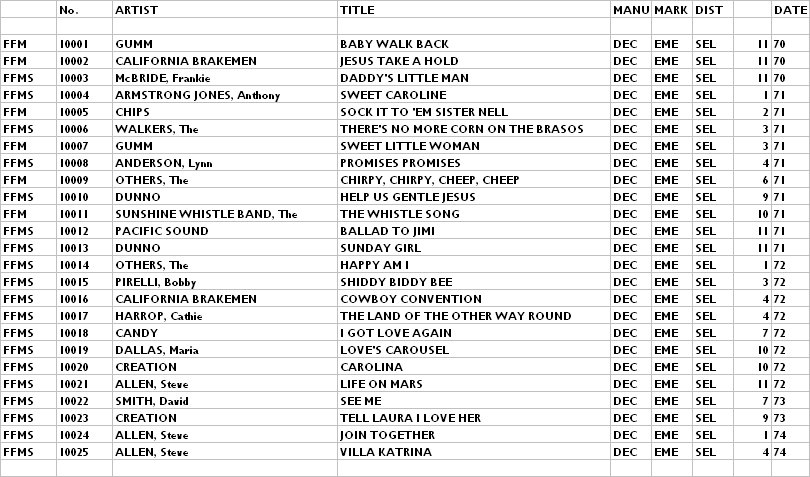


Copyright 2006 Robert Lyons.

